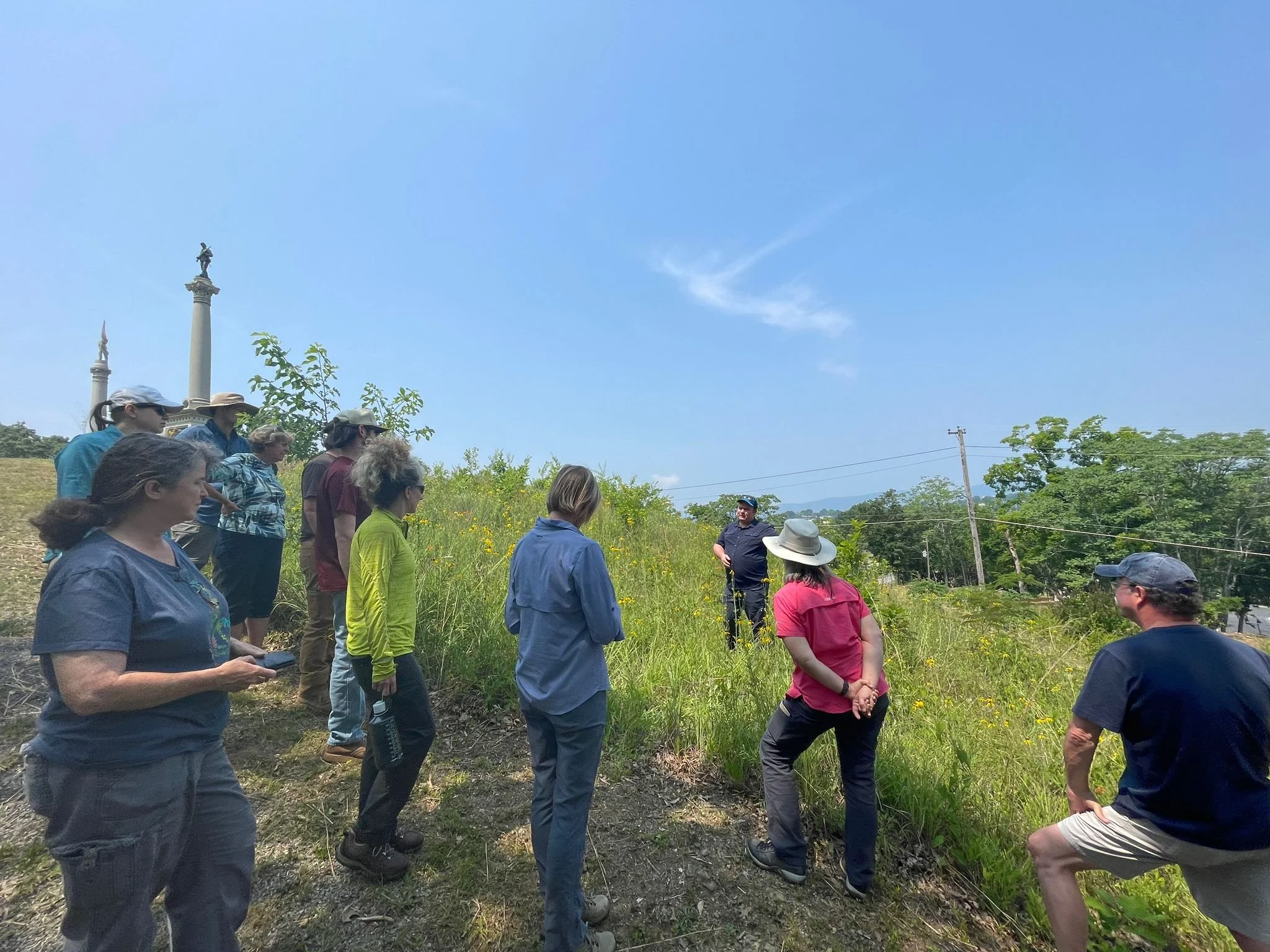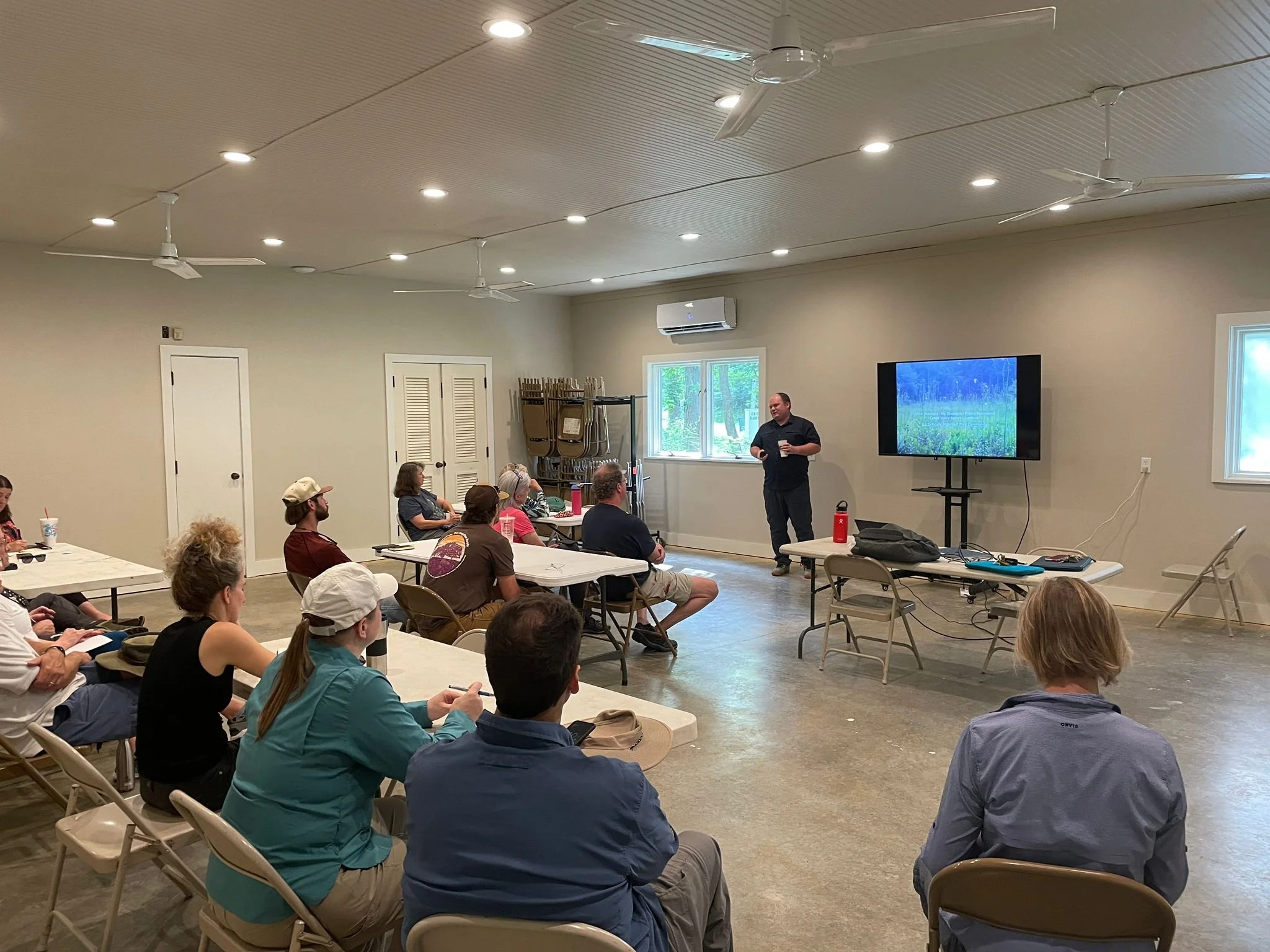Approximately 95% of native historic grasslands in the Southeast have disappeared. The species that depend on those grasslands for habitat and resources, like Henslow’s Sparrow, Slender Glass Lizard, Dianna Fritillary, Meadow Jumping Mouse, and Earleaf False-Foxglove, are disappearing alongside them. Historically, Tennessee alone had 7.5 million acres of grassland including prairies, pine and oak savannas, barrens, glades, balds, and a variety of open herbaceous wetlands like fens, bogs, and meadows—all accompanied by another 5-10 million acres of open woodlands with grassy understories. The loss of these habitats continues to take its toll on the plants and animals that depend on them. Here at the Southeastern Grasslands Institute (SGI), we strive to address this massive threat to biodiversity by preserving, restoring, and re-creating these grassland landscapes.
“In the Southeast,” says Zach Irick, SGI’s Southern Appalachian Grasslands Ecologist based in Chattanooga, “most of the natural sites that need to be restored are on private property.” In fact, approximately 90% of the land in this region is owned by private landowners. Essential to our work of protecting these vital ecosystems is informing and collaborating with landowners. To meet this need, several SGI initiatives—including the Plant It Forward program funded by the U.S. Department of Agriculture’s Natural Resources Conservation Service (NRCS)—host grassland restoration workshops for private landowners in the region.
In June, twenty interested landowners joined together at the Reflection Riding Arboretum & Nature Center in Chattanooga to learn more about how they could have an impact on their own property. Irick led a presentation that first defined native healthy grassland types in this area and introduced the need for conservation and restoration. In a classroom setting, he outlined key species all in an effort to point out what species and grassland types landowners can try and identify on their land.
After getting a general understanding of broader definitions and historical ecology, Irick informed participants of the steps to evaluate a site and start a restoration project. “I shared what I would do if I was starting my own restoration, on my property,” he adds. This includes breaking down the total acreage into different vegetation zones and mapping out what sort of management and possible seed mixes might be needed in each zone. It’s a thorough process, identifying soil types and species lists of what’s needed. The restoration process takes time, he emphasized, and monitoring is central to the process. “It doesn’t have to be super scientific,” says Irick, “even just taking good photos to document change over time will work.”
Following the lecture, participants joined Irick and SGI Native Seed Program Director Marcello De Vitis in the field. They explored a restoration project at the Orchard Knob Reservation in Chattanooga to see what is possible. Here, participants were able to apply some of what they learned in the classroom portion of the workshop.
It was a lot of information and everyone left with takeaways to apply for their own use. “I joined the workshop to learn as much as I could from Zach,” says Christie Burns, an attendee who has hopes of restoring her own property. She and her husband recently purchased a two acre property on Lookout Mountain in northwest Georgia; “the property is a blank slate to us,” says Burns, and restoring the health of the land is central to their decision of what to do next with the property. They’ve considered purchasing aesthetically pleasing species, like those with bright blooms or bushy foliage, that might offer a quick solution. “But I wondered, maybe there's a greater purpose for what we should do with the land,” she says. By learning more from SGI and other resources, Burns aims to be more intentional about preserving the site’s original ecosystem, which would have been pine-oak savanna on the top of Lookout Mountain. “I would love to set a good example,” she adds, and hopes to inspire others in her neighborhood to move slowly with making decisions about what to plant and how to approach their own property.
Even those with decades of experience walked away with new ideas from Irick’s presentation, including landscape architect Matt Whitaker, who serves as the Chair of the Board at Reflection Riding. “What I enjoyed most about the workshop was the focus on identifying the best species mix depending on a site’s location and soil,” he says, “it’s really taking restoration to the next level.”
““I’m learning to recognize that I come from a world where we plant things because of pretty colors or because they fit nicely in our human world, but workshops like this help me see how to flip the script. I’m realizing my role as a steward of the land.””
Whether you’re new to grassland restoration or have been working on preserving habitat in the Southeast for a long time, SGI aims to provide new insights and community for those on the important mission of stewarding this vital landscape. “I’m learning to recognize that I come from a world where we plant things because of pretty colors or because they fit nicely in our human world, but workshops like this help me see how to flip the script,” says Burns. “I’m realizing my role as a steward of the land.”
Interested in learning more? Please reach out to Zach Irick at zach.irick@segrasslands.org or Marcello De Vitis at marcello.devitis@segrasslands.org with any questions. We hope to see you at the next workshop! Through this initiative, SGI hopes we can all become better stewards of the Southeast.
brynn pedrick, NATIVE SEED PROGRAM COMMUNICATIONS OFFICER
Brynn is the Communications Officer for the Native Seed Program. She has a background in zoology, conservation, and nonprofit storytelling, and is pursuing her MA in Science Writing from Johns Hopkins University.



